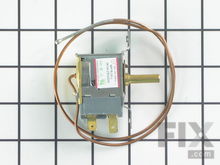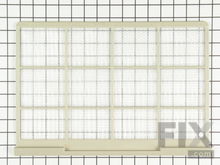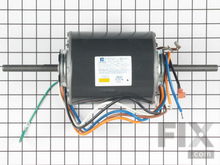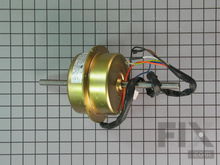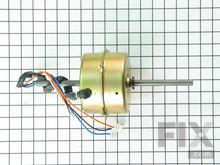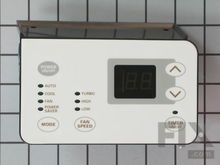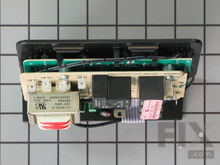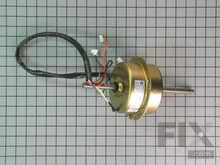How To Repair Air Conditioner That's Icing Up
- Rated as REALLY EASY
- 18 repair stories
- 5 step by step videos
Temperature Control
If your air conditioner is icing up and you have inspected the air filter and fan motor and found them okay, then you may have a problem with the temperature control or thermostat. This is the device that monitors the incoming air temperature and turns the compressor on or off. There is normally a sensing bulb attached to the control and it will be located at the evaporator coil. The bulb detects the room air temperature and tells the thermostat control to shut the compressor off when the desired temperature has been reached. If the temperature control or thermostat is defective, it can cause the compressor to run continuously and possibly lower the temperature of the room air to a point where the evaporator can no longer extract heat from it and the coils will begin to ice over. This can also occur normally during very high humidity conditions. Inspect the sensing bulb for any signs of a sharp bend, kink or rupture and replace if any are found. Verify that the sensing bulb is properly located in the air flow through the evaporator coils before condemning the control.
Air Filter
The most common cause of window air conditioners icing up is a lack of adequate air flow. Room air is drawn over the evaporator coils where it is cooled and then re-circulated back into the room. Insufficient air flow over the evaporator coils will cause them to become too cold. Frost or ice can form, restricting air flow even more, which will result in little or no cool air being circulated into the room. Regular replacement or cleaning of the air filter is essential to maintaining the efficiency of the air conditioner. The air filter is normally located behind the front grille which may be attached by plastic tabs. Newer models may have a slide out filter with a port on the side of the grille.
Fan and Fan Motor
The most common cause of window air conditioners icing up is a lack of adequate air flow. In a properly working air conditioner, a fan will draw air over the evaporator coils, where it is cooled, and then be re-circulated back into the room. If the circulating fan is not running or running too slow, little or no air flow over the evaporator coils will cause them to become too cold and frost or ice can form, restricting air flow even more. This will result in little or no cool air being circulated into the room. The fan motor is located inside the cabinet and access will require removal of the cover. The motor should turn easily by hand and if not, it will have to be replaced. Verify that the fan blade is securely attached to the motor shaft and replace if it is bent or damaged. If the motor does turn easily by hand, it may have burned out and require replacement. There could also be a condition where the motor does not receive power from the thermostat or control board and this would have to be checked with a voltmeter by a qualified person.
Electronic Control Board or PCB Assembly
If your air conditioner is icing up and you have inspected the air filter and fan motor and found them okay, then you may have a problem with the control board, sometimes referred to as the PCB. This is an electronic control that controls the fan motor and compressor circuits. There is normally a sensing thermistor, located at the evaporator coil that monitors the room air temperature and turns the compressor on and off. If the control board is defective, it can cause the compressor to run continuously and possibly lower the temperature of the room air to a point where the evaporator can no longer extract heat from it and the coils will begin to ice over. This can also occur normally during very high humidity conditions. Inspect the sensor for any signs of damage before condemning the control board.
Fan Motor Capacitor
The most common cause of window air conditioners icing up is a lack of adequate air flow. In a properly working air conditioner, a fan will draw air over the evaporator coils, where it is cooled, and then be re-circulated back into the room. If the circulating fan is not running or running too slow, little or no air flow over the evaporator coils will cause them to become too cold and frost or ice can form, restricting air flow even more. This will result in little or no cool air being circulated into the room. Some window air conditioners utilize a run capacitor in the fan motor circuit. If the motor hums or turns slowly you may have a defective capacitor. The fan motor and capacitor are located inside the cabinet and access will require removal of the cover. If the capacitor does not show any visible signs of damage you will require a qualified person to check it with special test equipment.
More Repair Parts
Still not sure which part is broken? We can offer you custom troubleshooting help if you search with your model number.






